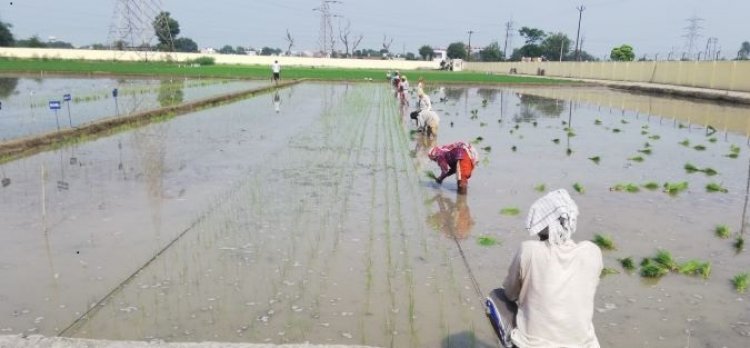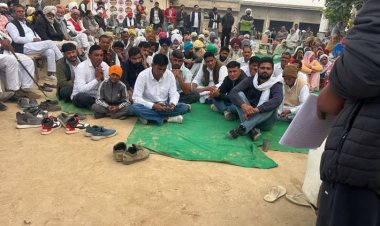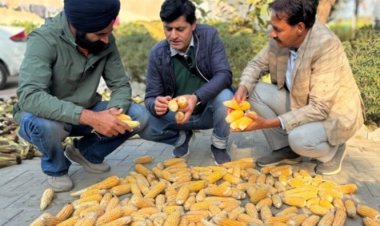Rainfall deficit of 42-53 per cent in several states may adversely affect foodgrain production in Kharif season
The government did not issue the paddy acreage figures last week. The figures issued on Friday July 29 may give a clearer picture. The government issues the figures for the area coverage of Kharif season crops every Friday. On the other hand, according to the figures available for the rainfall from June 1 to July 27 during the current monsoon season, the rainfall level continues to be 42-53 per cent below normal in UP, Bihar, Jharkhand and West Bengal. This is bound to have a direct effect on the paddy acreage and the rice production for the Kharif season.

The government did not issue the paddy acreage figures last week. The figures issued on Friday July 29 may give a clearer picture. The government issues the figures for the area coverage of Kharif season crops every Friday. On the other hand, according to the figures available for the rainfall from June 1 to July 27 during the current monsoon season, the rainfall level continues to be 42-53 per cent below normal in Uttar Pradesh (UP), Bihar, Jharkhand and West Bengal. This is bound to have a direct effect on the paddy acreage and the rice production for the Kharif season.
Taking into account these rainfall trends, the government should issue a contingency plan for the farmers so that they may select the right crop varieties in keeping with the rainfall situation. If the rainfall situation now turns for the better, the government should inform the farmers about sowing the less-than-125-day rice varieties.
According to the Indian Meteorological Department (IMD), there has been only 144mm of rainfall in Western UP up to July 27, which is about 50 per cent less than the Long Period Average (LPA) of 285mm for the period of June 1 to July 27. Similarly, there has been 162.8mm of rainfall in Eastern UP up to July 27 compared to the LPA of 349.6mm, thus falling short by 53 per cent. In Bihar, the normal rainfall should have been 462.9mm up to July 27, but the actual rainfall has been 269.1mm so far, which is 42 per cent less than the LPA. The LPA for Jharkhand is 467.4mm up to July 27, but the rainfall here has been less by about 50 per cent at 232.8mm. As for the plains of West Bengal, the rainfall has been 297.1 mm up to July 27 against the LPA of 546.9mm — 46 per cent below normal.
Interestingly, the country has received an overall rainfall of about 10 per cent above normal. While the normal rainfall should be 408.9mm across the country up to July 27, the actual rainfall has been 451.5mm. Thus, it is the regional imbalance of rains that has brought difficulties for the farmers in the current Kharif season.
In fact, the farmers set up nurseries for the Kharif season between June 1 and June 15 and transplant paddy from the last week of June to mid-July. If the nursery gets older than four weeks, it does not remain suitable for better yields. Given this scenario, the farmers from UP, Bihar, Jharkhand and West Bengal have lost the opportunity to transplant paddy on time. This is especially true for those regions where farmers do not have adequate irrigation facilities, because it is beyond their means to spend on the expensive diesel to protect their crop of paddy, which needs 20-25 rounds of irrigation, in absence of rainfall. They do not have irrigation facilities powered by electricity. In such a situation, there are fears that paddy productivity may decline.
One hopes that a clearer picture would emerge when the government issues the crop coverage figures for the Kharif season on Friday July 29. According to the July 15 figures, the paddy acreage stands reduced by 17.38 per cent across the country as compared to last year. As per the government figures, while the paddy acreage was 155.53 lakh hectares last year up to July 15, it has reached only 128.501 lakh hectares up to July 15 in the current Kharif season.
The decline in paddy acreage during the Kharif season may have an impact on rice prices. However, as far as the overall foodgrain stocks in the central pool are concerned, the situation is pretty good at present. Especially in the case of rice stocks, it is highly satisfactory. The rice stocks are 3.5 times the buffer norms for July 1. On this date, the rice stocks in the central pool stood at 472.18 lakh tonnes (lt) this year, which is marginally lower than 491.10 lt last year. The buffer norms mandate rice stocks of 135.4 lt on this date. But when it comes to wheat, the situation is not so comfortable. On July 1, the wheat stocks in the central pool stood at 285.10 lt, pretty close to the buffer norms of 275.80 lt. On July 1 last year, the wheat stocks in the central pool had been 603.56 lt. On 1 July 2022, the combined stocks of wheat and rice stood at 757.28 lt while a year ago, the central pool had stocked 1,094.66 lt of these foodgrains.



 Join the RuralVoice whatsapp group
Join the RuralVoice whatsapp group







































